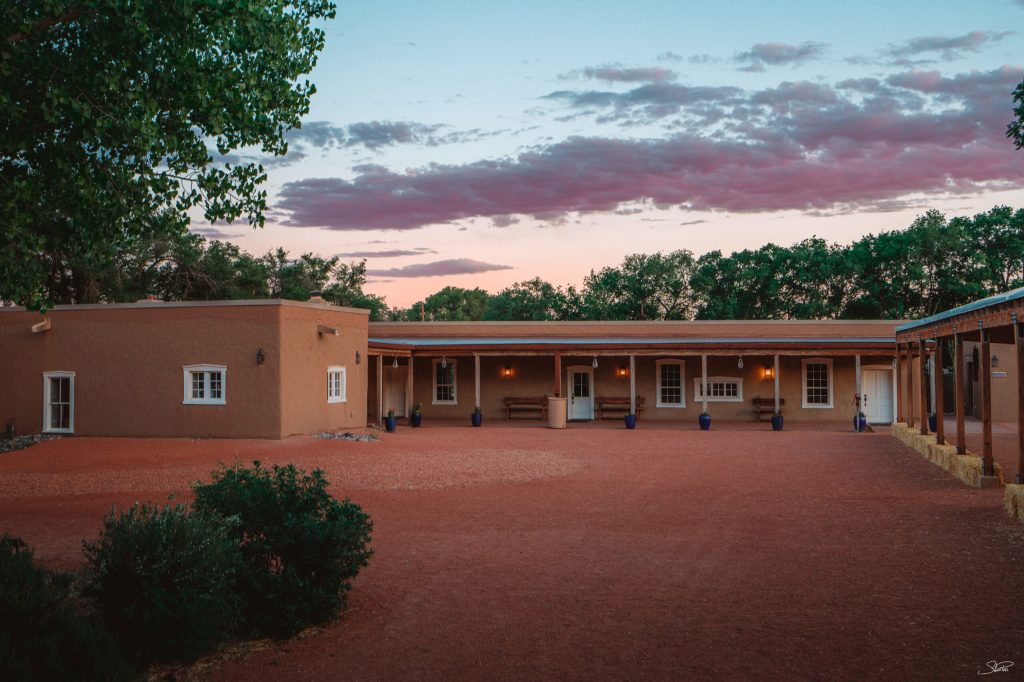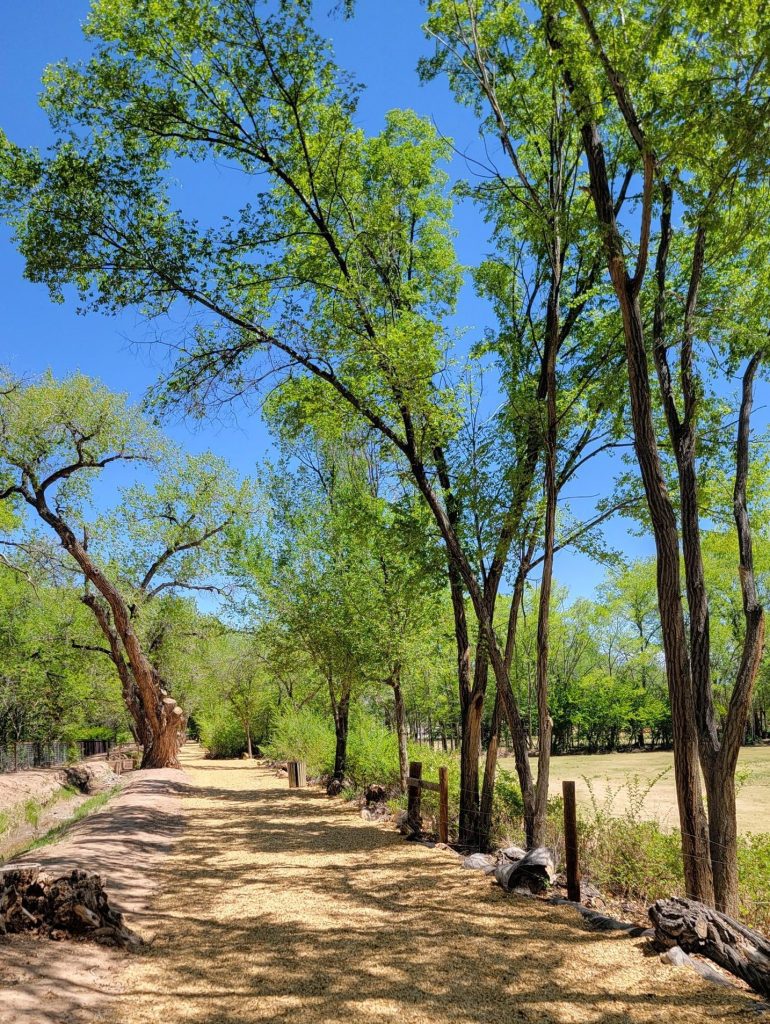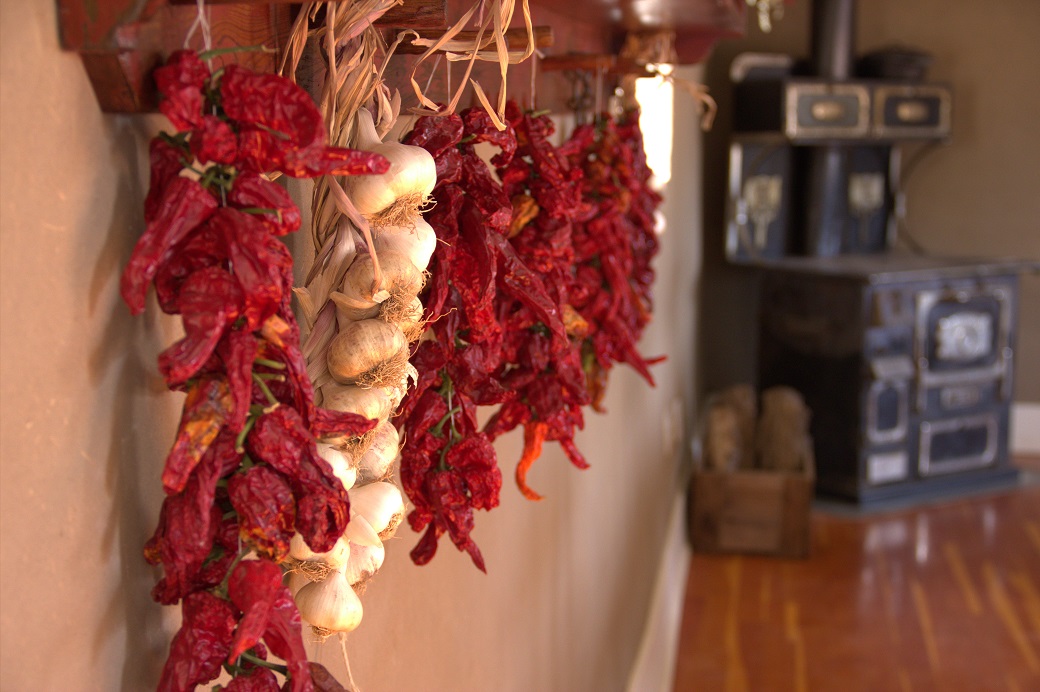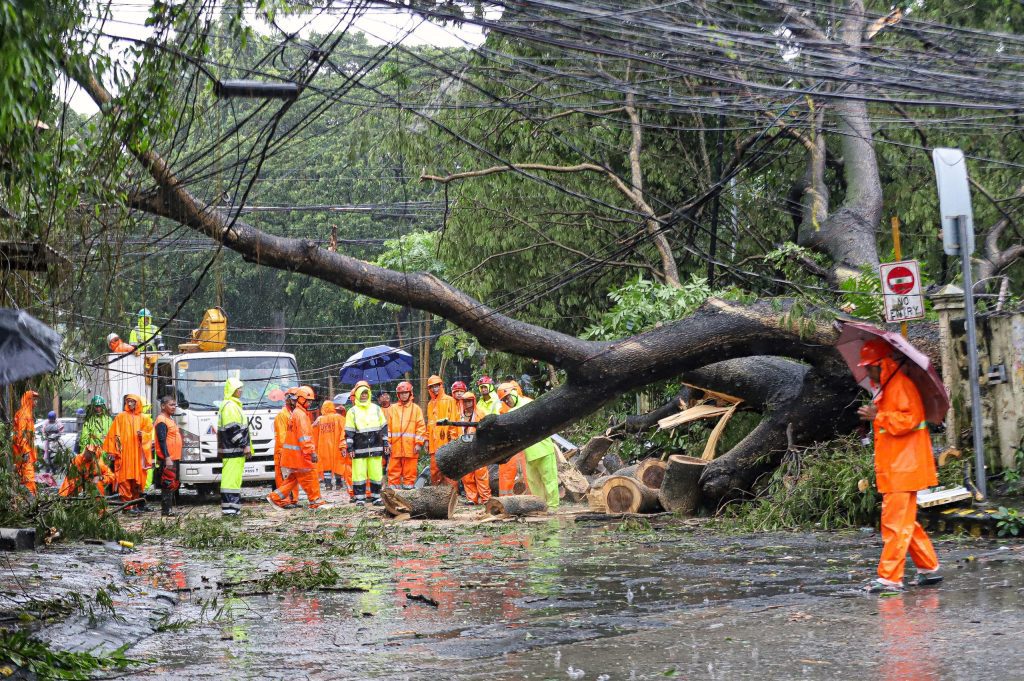Life in Albuquerque can sometimes seem dull, boring, and beige. This can be doubly true during the hot summer months when the intense New Mexico sun beats down upon the concrete and asphalt of the 47th US state’s largest, most populous urban center. However, all it takes is one small detour around an unassuming corner to remind Burqueños and tourists alike that this land upon which the city is built has a soul – an old soul. In some cases, the experience of wandering into these antiquated areas can feel not merely like stepping back in time, but as if one has been spirited away in some southwestern version of a Japanese Isekai story.
Petroglyph National Monument
In the northwestern corner of Albuquerque, near the boundary of Rio Rancho, an awe-inspiring experience awaits. Amid winding city streets, just across from a gas station, a pharmacy, and a burger joint, a sudden turn leads to the Piedras Marcadas Canyon Trailhead. The parking lot, tucked behind a busy mechanic’s shop and a strip mall, seems unremarkable—until the moment one steps beyond it and into another world entirely.

A few strides up the walkway, concrete gives way to the sand of the Chihuahua Desert’s northernmost edge. The noise of traffic and the clatter of the auto shop fade, replaced by the soft whisper of the breeze. a landscape of golden sand peppered with rugged brush stretches out before you beneath an endless sky. It feels almost like stepping through the wardrobe into another realm as the path winds through towering hills of dark volcanic stone.
On the horizon, the monument’s western boundary rises in a chain of dormant fissure volcanoes—the forces that shaped this striking terrain on the city’s fringe. Petroglyph National Monument preserves these five volcanic cones (Butte, Bond, Vulcan, Black, and JA), along with hundreds of archaeological sites.

Around 200,000 years ago, six volcanic eruptions formed a 17-mile-long basalt escarpment, leaving behind rocks rich in iron, manganese, and calcium. Over time, exposure to the elements created a dark patina known as “desert varnish,” an ideal canvas for ancient artists and storytellers. Indigenous peoples of the region took full advantage of this natural phenomenon, leaving behind roughly 24,000 petroglyphs.

Archaeologists have traced some carvings back 3,000 years, particularly in Boca Negra Canyon. However, most petroglyphs date from AD 1300 to the late 17th century, a period of rapid Native population growth and Pueblo village expansion along the Rio Grande and Sandia Mountains. Today, visitors may spot the occasional modern addition—a rogue act of vandalism and a felony offense—though such instances remain rare.

The petroglyphs depict a vast array of images: animals, people, symbols, crosses, and brands, alongside intricate designs with deep cultural significance. Each Pueblo community interprets these symbols in its own way, knowledge rarely shared with outsiders. Yet, even among the Indigenous groups who still hold this land sacred, the original intent of many carvings is known only to their long-deceased creators. What is certain, however, is that these etchings were meaningful. Reaching the petroglyphs required hours of travel on foot—a journey that, for centuries, was the only way to witness them.
Coronado Historic Site
The small town of Bernalillo lies just north of Albuquerque off the I-25 Freeway. Driving down the bustling main avenue, a nondescript side street offers another detour into the distant past. A sharp turn between a brewery and a gas station leads past a campsite full of trailers and RVs, then through a bright white set of gates. A landscape of colorful brush and red soil greets you as the cacophony of roaring traffic and beeping horns fade from your ears and then quiets altogether. A moment later, you have stepped back in time, 500 years. The jarring shift in tone and landscape leaves you asking if a tornado has just picked you up and dropped you in a faraway land over the rainbow.

The Coronado Historic Site sits atop a set of hills that drop off before stunning views of the shining Rio Grande and the soaring Sandia Mountains. Today, a visitor’s center and museum sit next to humble picnic areas and well-kept walking paths. Centuries ago, this site was the northernmost of the 12 villages that comprised one Pueblo community in the Rio Grande Valley. The Kuaua (“Evergreen”) village was built around AD 1325 by the Tiwa Pueblo people and was home to approximately 1,200 when the Spanish arrived in 1540.

Conquistador Francisco Vásquez de Coronado arrived with 500 soldiers and 2,000 subjugated Aztec warriors, searching for the legendary Seven Cities of Gold, which he believed might lie somewhere to the north. Sadly, the ensuing conflict with Coronado and later Spanish explorers led the Tiwa people to abandon the Kuaua Pueblo within the following century. Descendants of Kuaua’s inhabitants moved to establish communities in Taos, Picuris, Sandia, and Isleta, where their descendants remain to this day. For this reason, a recent movement has begun to rename the site. Proponents argue the name should better reflect and celebrate the village’s original inhabitants rather than a colonizer who merely passed through causing trouble and heartache.

 Today, the reconstructed Kuaua village serves as a window to the past, reflecting a rich culture shaped by the desert environment in architecture, art, cuisine, and oral traditions. One impressive attraction is the square kiva (ritual chamber), excavated in 1935. The dig revealed pre-Columbian murals considered among North America’s finest pre-contact mural art. Fourteen original mural layers from the kiva are on display at the Visitor Center, along with artifacts from prehistoric and Spanish Colonial eras.
Today, the reconstructed Kuaua village serves as a window to the past, reflecting a rich culture shaped by the desert environment in architecture, art, cuisine, and oral traditions. One impressive attraction is the square kiva (ritual chamber), excavated in 1935. The dig revealed pre-Columbian murals considered among North America’s finest pre-contact mural art. Fourteen original mural layers from the kiva are on display at the Visitor Center, along with artifacts from prehistoric and Spanish Colonial eras.
GUTIÉRREZ HUBBELL HOUSE
A short drive south of Downtown Albuquerque along El Camino Real reveals a striking transition from a metropolitan cityscape to the agrarian charm of the South Valley. Here, family farms, modest adobe homes, and cottonwood groves line the roads, evoking a deep sense of place rooted in history. Nestled within this landscape is the Gutiérrez-Hubbell House, a preserved adobe estate that stands as a testament to New Mexico’s diverse cultural heritage.

Built in the 1820s and expanded in the mid-19th century, the home served as a stagecoach stop, trading post, post office, and mercantile along El Camino Real de Tierra Adentro—the oldest continuously used European trade route in North America. Originally part of a 40,000-acre estate, it was the residence of Juliana “Julianita” Gutiérrez, a descendant of prominent Hispanic families, and James Lawrence “Santiago” Hubbell, a Connecticut Yankee who embraced New Mexican culture and became bilingual. Their children, raised in a bicultural household, embodied New Mexico’s blend of Spanish, Anglo, and Indigenous influences, positioning them well for the state’s eventual path to statehood. Their son, Juan “Lorenzo” Hubbell, later founded the famous Hubbell Trading Post in Ganado, Arizona, now a National Historic Site.

The Gutiérrez-Hubbell House itself reflects the region’s layered history, blending Puebloan, Spanish, and Greek Revival architectural styles. The family’s deep connections with Native communities were evident in their reliance on Isleta Pueblo laborers and the incorporation of Indigenous foods and medicinal practices, likely introduced by Native women in domestic roles. San Agustín Church at Isleta Pueblo remained the family’s religious center for generations, hosting baptisms and marriages.
 The Gutiérrez-Hubbell House itself reflects the region’s layered history, blending Puebloan, Spanish, and Greek Revival architectural styles.
The Gutiérrez-Hubbell House itself reflects the region’s layered history, blending Puebloan, Spanish, and Greek Revival architectural styles.
In the late 1990s, the house faced the threat of development when the last Hubbell family member to own it passed away. A grassroots movement opposed plans to subdivide the land, and Bernalillo County ultimately purchased the property, establishing its first Open Space preserve. Today, the site has been transformed into the Gutiérrez-Hubbell House History and Cultural Center, which features exhibits on regional history, adobe architecture, and agricultural traditions. Visitors can explore walking trails along the historic Acequia Madre, an irrigation system dating to the 1600s, and experience the tranquility of heirloom orchards, heritage gardens, and cultivated fields.

According to David Ottaviano, the site manager, “The house and property encapsulate the cultural influences of Native American, Spanish, Mexican, and Anglo traditions—not just in the architecture but in the languages spoken, the food produced and eaten, and the very identity of the family that lived here.” Listed on both the National Register of Historic Places and the New Mexico Register of Cultural Properties, the Gutiérrez-Hubbell House remains a living reminder of New Mexico’s enduring multicultural legacy, a place where past and present converge to celebrate the region’s rich heritage.





